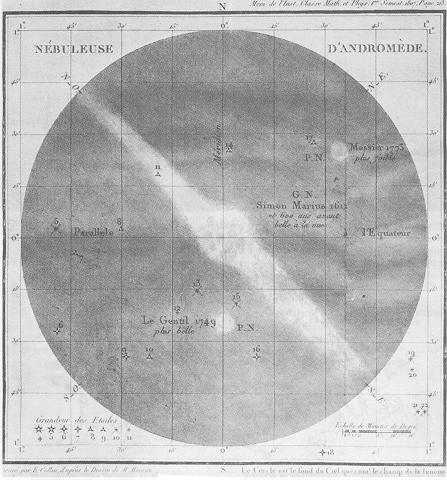Post
by kovil » Sun May 10, 2009 12:18 pm
Art, I am consistently impressed with your skills at gathering varying data together from multitudinously diverse sources. Bravo again !
"The true nature of M31 began to become clear in 1923. In that year Edwin Hubble, using the just completed 100 inch Hooker telescope at the Mount Wilson observatory, made his monumental discovery of Cepheid Variable stars in M31 and in one stroke forever changed the astronomical paradigm of the universe as we knew it. Appropriately interpreting the cepheid data, Hubble was the first to appreciate the faint nebula in Andromeda as an "island universe", an immense galaxy in its own right, similar to our Milky Way."
"M31 has the distinction of being the nearest of all spirals at a distance of 2.5 million light years. Its disk, tilted toward Earth by some 13 degrees, exposes the grandeur of its spiral structure and star systems to telescopic exploration."
"M31, along with its near twin, the Milky Way, represent the two dominant giant galaxies of our Local Group which consists of some 40 members. M31 and the Milky Way are actually moving toward each other and a close encounter or even a full collision may be in store for both galaxies in several billion years. Studies of globular clusters in M31 have revealed at least 4 different subpopulations . . ."
"As far back as 1974 astronomers noted a curious asymmetry to the nucleus of M31. It wasn't until 1995 that the Hubble Space Telescope with its great precision, was able to resolve the light of the nucleus into two separate structures. The two light sources of the double nucleus are separated by a miniscule 0.49 arcseconds (6 light years), a distance difficult or impossible to resolve with earth based telescopes. HST images resolved two brightness peaks which were named P1 and P2. Further investigation showed that the optically dimmer P2 was very close to the true center of the galaxy. The brighter P1 is slightly off center creating the illusion of an asymmetric nucleus in ground based images. Recent HST observations have identified a rotating disk of more than 400 blue stars orbiting the true nucleus. The disk is only one light year in diameter and its stars have a remarkable orbital velocity of 2.2 million miles per hour (600 miles per second), . . . The brighter light source P1 is artifactual and has its basis in the eccentricity of the rotating circumnuclear stellar disk. It seems that the appearance of the two extremes of the ellipsoidal orbit creates an illusion of a second bright region towards our line of site. Several other galaxies are known which possess a true double nucleus . . ."
For my own part I can't stand the insertion of 'fringe science' clap-trap assumptions about black holes etc, so I edited out those massively assumptive presumptions of such fictious things, and left the real data. Not being allowed here to post a better explanation of what is going on at the core of the Andromeda Galaxy due to the religious/political rules of the APOD posting boards, Good Morning !

